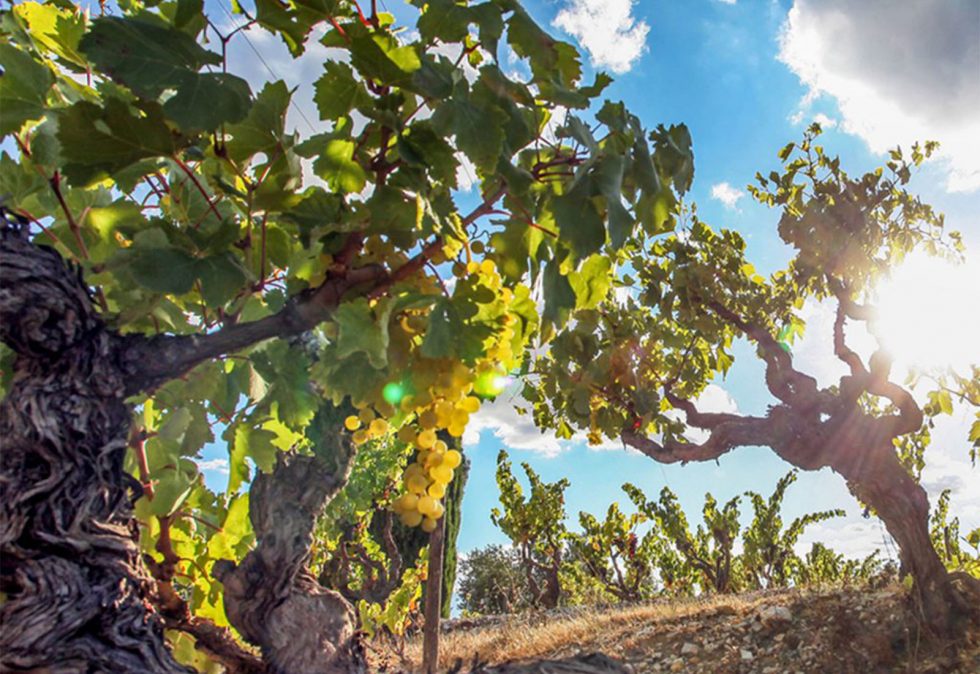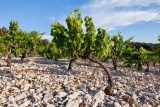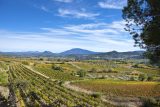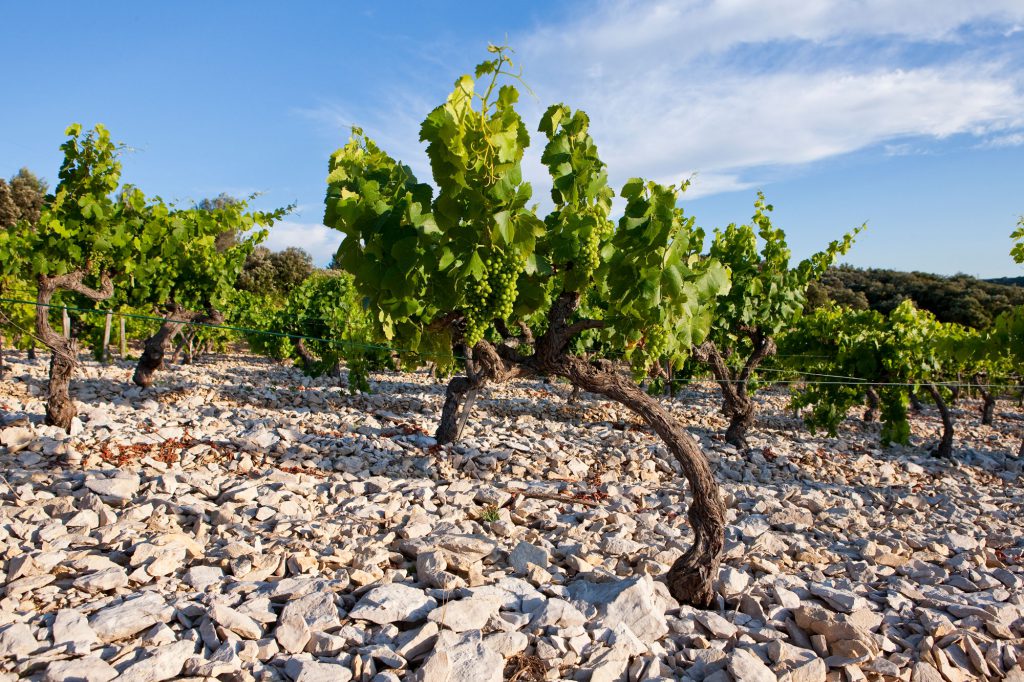Die Vielfalt der Böden als Grundlage des Reichtums der Appellation
Die jahrhundertelange Arbeit der Winzer der Appellation macht es möglich, die ganze Vielfalt der Anbauböden zu erfassen, auf denen sich unsere Weine entfalten können. Durch die Aufstellung eines Verzeichnisses und die Identifizierung der Faktoren, welche die Charakteristika ihrer Weine beeinflussen, haben sie ihr Weinbaugebiet kartografiert und ihre Arbeit angepasst. So werden Weine ausgebaut, von denen jeder seinen eigenen Charakter hat, der von den Besonderheiten des Ortes und der Art, wie diese vom Winzer interpretiert werden, definiert wird.
Die Vielfalt der Anbauböden der Côtes du Rhône ist das Ergebnis einer bewegten geologischen Geschichte. Das zwischen dem Zentralmassiv und den Alpen entstandene Rhônetal ist im Norden eng und weitet sich in Richtung Süden ab dem Breitengrad von Montélimar allmählich zu einem Relief aus Ebenen und Hügeln, die von weiter entfernten Anhöhen umrahmt werden.
Das Zentralmassiv besteht hauptsächlich aus Granit und Felsgesteinen, deren Ursprünge auf das Erdaltertum (mehr als 300 Millionen Jahre) zurückgehen. Das linke Ufer, östlich des Flusses, entspricht wiederum dem Vorgebirge der Alpen, wo sich flache Hänge und Hügel abwechseln.
Die Erosion dieser beiden Massive hat die Landschaft geformt und die berühmten, legendären Lagen unserer Appellationen hervorgebracht. Das vom Fluss angetragene Schwemmland versorgte die Hänge mit Ablagerungen, darunter auch die berühmten runden Kieselsteine, die für den Süden der Côtes du Rhône charakteristisch sind.
Die Weinproduktion in den Côtes du Rhône beruht auf einem Mosaik aus Anbauflächen, das die Vielfalt des Reliefs, der Geologie, des Klimas der Region, der Auswahl an Rebsorten und der Verfahren in Weinbau und Kelter, die von unseren Fachleuten angewandt werden, widerspiegelt. Traditionell wird zwischen zwei großen Anbaugebieten unterschieden: den nördlichen und südlichen Côtes du Rhône.
Im nördlichen Teil liegt das Weinbaugebiet vor allem auf engen Anbauflächen in unmittelbarer Nähe zum Fluss, die von einem kontinentalen Klima geprägt sind. Die wichtigsten Anbauflächen dieser Region klammern sich an die steilen Hänge, die aus den Felsen des Zentralmassivs entstanden sind.
Im südlichen Teil der Côtes du Rhône sind eher die mediterranen Einflüsse spürbar:
- Auf Kalkböden sind Weinberge nur vereinzelt vorhanden, wie in den Dentelles de Montmirail, wo sie neben senkrecht emporragenden spektakulären Felsen verlaufen. Diese Böden verleihen den Weinen, die dort produziert werden, eine besondere Finesse und sind vor allem günstig für Weißweine.
- Die Sandböden bilden steinige Hügel, auf denen sich Weinstöcke mit den Rebsorten Grenache und Syrah erstrecken, die leichte, fruchtige Weine hervorbringen.
- Die Kiesterrassen mit ihrer effizienten Entwässerung und der dort angebauten Grenache-Variationen bringen in der Cuvée mit Syrah und Mourvèdre seidige Weine mit Aromen von reifen Früchten und würzigen Noten hervor. Die Weißweine sind belebend und elegant.
Die Hierarchie zwischen der regionalen Herkunftsbezeichnung „Côtes du Rhône“ und den „Côtes du Rhône Villages“ mit oder ohne Namen der Kommune spiegelt eine genaue Identifizierung dieser spezifischen Anbauböden wider.
Steillagen sind im Norden des Rhônetals von Lyon bis zum Breitengrad von Valence allgegenwärtig. In diesem Teil des Tales sind die Weinberge auf engen, von Steinmäuerchen gestützten Terrassen angelegt, die nur wenige Meter breit sind und an steilen, manchmal fast senkrecht verlaufenden Hängen liegen. Diese Konstruktionen zeigen, zu wie viel Einfallsreichtum und harter Arbeit der Mensch imstande ist, um ein paar Quadratmeter Wein anzubauen.
Diese Terrassen gibt es seit gallo-römischer Zeit, als Legionäre in der Nähe der Stadt Vienne an ihrem Aufbau beteiligt gewesen sein sollen.
Die Errichtung dieser Terrassen erfordert viel Energie und Fachwissen. Auch die Pflege des Weinbergs ist mit einem erheblichen Aufwand verbunden: Alle wesentlichen Arbeitsschritte werden von Hand erledigt, vom Beschneiden über die Pflege bis hin zur Weinlese. Folglich ist es extrem schwierig, hohe Erträge zu erzielen. Doch egal wie der Weinberg ausgerichtet ist, die Vorteile des Terrassenweinbaus sind beträchtlich: Die Sonnenstrahlen treffen im rechten Winkel auf den Boden und bringen so dem Weinberg ein Maximum an Energie; die Mäuerchen speichern tagsüber die Wärme und geben sie nachts wieder ab – lauter Faktoren, die eine gute Reifung der Trauben und eine hervorragende Weinqualität begünstigen.
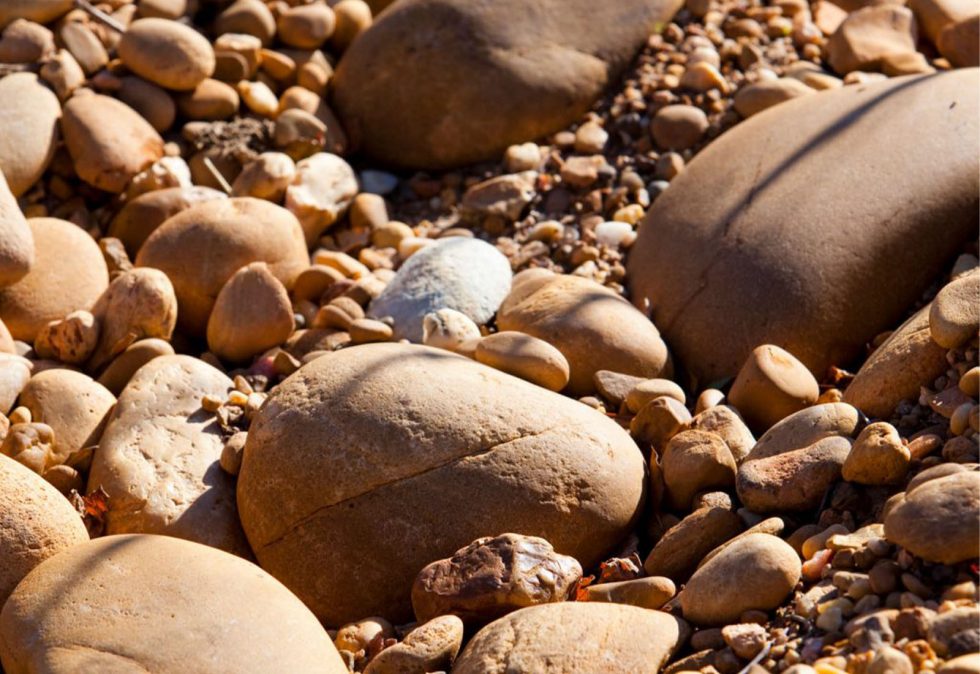
Sonne und Mistral, zwei Erfolgsfaktoren für eine perfekte Weinlese
Die Côtes du Rhône sind zwischen Norden und Süden in zwei verschiedene Klimazonen unterteilt. Im Norden weist das Klima kontinentale Züge mit heißen Sommern und kalten Wintern auf. Im südlichen Teil ist das typisch mediterrane Klima von sehr sonnigen, heißen und trockenen Sommern und milden Wintern mit höherer Feuchtigkeit geprägt. Die Sonneneinstrahlung, die Wärme, der oftmals starke Wind und die relative Trockenheit begünstigen die gute pflanzliche Entwicklung und das Reifen der Reben und begrenzen zugleich den Ausbruch von Krankheiten – eine wertvolle Unterstützung für die Herstellung großer Weine.
Von Norden nach Süden wird die Dauer der Sonnenstunden pro Jahr in Richtung Mittelmeer immer stärker: Südlich von Lyon liegt sie zwischen 1.900 und 2.100 Stunden, in der Mitte des Tals bei Valence steigt sie auf 2.200 bis 2.300 Stunden an und südlich von Avignon liegt sie bei über 2.800 Stunden. Die Sonnenscheindauer der Côtes du Rhône erreicht damit einen der höchsten Werte in Frankreich – im Vergleich zu Bordeaux (zwischen 2.000 und 2.100 Stunden im Jahr) und dem Loiretal (zwischen 1.700 und 1.900 Stunden). Unter diesen Bedingungen findet die Weinlese im Süden für gewöhnlich eher statt als im Norden des Tals und die Weine sind dort vollmundiger und kräftiger.
Die Rebsorten, die von unseren Fachleuten gekeltert werden, sind an diese unterschiedlichen klimatischen Bedingungen angepasst. In der Assemblage der drei wichtigsten Rebsorten, die für die Weine der Côtes du Rhône verwendet werden (Syrah, Grenache und Mourvèdre), dominiert Syrah im Norden der Rhône, wo sie auch ihren Ursprung hat, während die aus Spanien stammenden Rebsorten Grenache und Mourvèdre mehr im Süden angebaut werden.
Der Mistral ist ein Wind, der im Rhônetal weht und der diejenigen, die ihn erlebt haben, stets inspiriert hat: Für Plinius den Älteren im 1. Jahrhundert nach Christus war der Mistral „der berühmteste aller Winde, den keiner auf der Welt an Stärke übertrifft“. Im Provenzalischen bedeutet mistrau so viel wie „Meister“: Er gilt als unbezähmbar. Im 16. Jahrhundert besagt eine Volksweisheit: „Mistral, Parlament und Durance (ein Fluss, der in der Region früher regelmäßig Überschwemmungen verursacht hat) sind die drei Geißeln der Provence“…
Die „Geißel“ bringt jedoch ein paar sehr gute Seiten mit sich, sie hat sogar eine heilsame Wirkung für die Weinberge des Rhônetals.
Indem er die Wolken vertreibt, begünstigt der Mistral ab dem Breitengrad von Valence, wo der mediterrane Süden beginnt, eine außergewöhnliche Lichteinstrahlung und ein besonders sonniges Wetter, das zu touristischen Aktivitäten einlädt. Im Frühling senkt er die Temperaturen und verlangsamt so das Aufbrechen der Knospen, worunter der Wein sonst im Falle eines späten Frühjahrsfrostes anschließend leiden könnte. Er verjagt den Frost in den Tieflagen des Reliefs. Vor allem aber beseitigt er die Luftfeuchtigkeit und verhindert folglich, dass sich Pilzerkrankungen wie der Echte oder der Falsche Mehltau entwickeln. Einhellig weisen die Winzer der Côtes du Rhône darauf hin, dass ihre Traubenernte, die manchmal geringer ausfallen kann, besonders gesund ist, ein Faktor für die gleichbleibende Qualität der Weine Jahr für Jahr. Die Lese wird schon in den frühen Morgenstunden in der Dämmerung durchgeführt, um den Erhalt der Fruchtsäure zu begünstigen, die für die gute Haltbarkeit und Aufbewahrung der Weine wichtig ist.
Die drei klassischen Pflanzen der mediterranen Zivilisation – Weizen, Oliven und Wein – wurden seit der Antike hier angebaut. Der Weizen verlor im 19. Jahrhundert im Zuge der regionalen Spezialisierung der Landwirtschaft zu Gunsten des Weins an Fläche. Die Olivenhaine sind im 20. Jahrhundert stark zurückgegangen. Heute lebt auf lokaler Ebene das Interesse an ihnen wieder auf; dort wird wieder sehr hochwertiges Olivenöl produziert.
Die bewässerte Ebene östlich von Avignon ist eine große Obst- und Gemüsebauregion. Mit der kontrollierten Bewässerung und durch den Bau der Eisenbahn in der zweiten Hälfte des 19. Jahrhunderts spezialisierte sich die Gegend allmählich darauf, die empfindlichen landwirtschaftlichen Erzeugnisse zu den Märkten von Lyon, Paris und Nordeuropa zu transportieren. Charakteristisch für diese Ebene ist eine Landschaft aus kleinen Parzellen, die durch Hecken aus Zypressen und durch Zäune aus Rohrgeflecht vor dem Mistral geschützt sind.
Die Landwirtschaft, insbesondere der Weinbau, wenden sich immer mehr dem biologischen Anbau zu. 2017 besaßen 18% der Betriebe im Département Vaucluse ein Bio-Zertifikat oder befanden sich gerade in der Umstellungsphase (9.500 ha). 8% waren es in der Ardèche (800 ha) und etwa 15% der Weinbauflächen, also 3.400 ha, in der Drôme. Im Allgemeinen führen die vorteilhaften sanitären Bedingungen überall im Weinbaugebiet zu einem umweltfreundlichen und besonnenen Weinbau, der auf den Einsatz chemischer Mittel weitgehend verzichtet.
